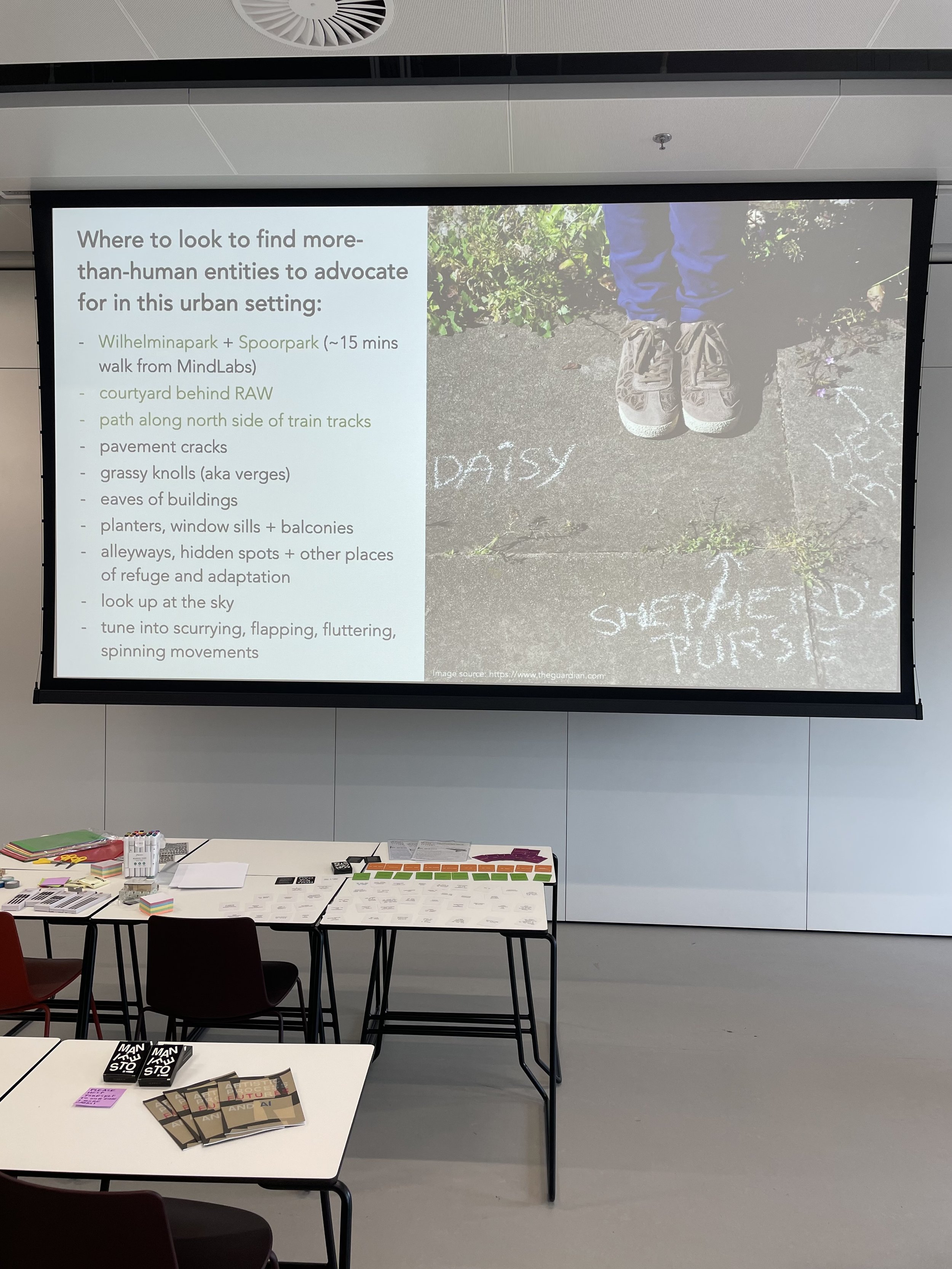Climate Changes Every *Thing* Workshop
Extreme weather events, melting polar ice, vulnerable ecosystems, and coral bleaching; these are just the tip of the endangered iceberg. Therefore, urgent action is needed to combat climate change. But when faced with such enormous challenges, we may feel helpless. Manifesto writing can help in this matter. It intends to create awareness, define our principles, call for action, and as Bruno Latour mentions in “Compositionist Manifesto,” a manifesto acts “not as a war cry… but rather as a warning” (Latour, 2010).
As part of the Communicating Climate Hope Conference of Tilburg University and The University of British Columbia, we held a two-hour workshop aimed at addressing climate-changed futures through constructive optimism via collaborative manifesto writing. With this, we wish to empower scholars to “speak collectively, build consensus, raise awareness, advocate for and accelerate change, speak for and from the margins, disrupt the status quo, unsettle stuck discourse, sidestep conventional modes, [and] expose broken promises” (Ashby et al., 2019). The workshop was set up in two stages: (1) Exploring urban settings to find non-human entities and analyzing these entities; and (2) Articulating principles and/or demands from the perspective of said non-human entities in the form of collaborative manifestos, intended for wider audiences. The workshop was inspired by the works of Embassy of the North Sea and our earlier workshops.
During Stage 1, scholars were divided into breakout groups in which they worked outside to get inspired by the biodiversity found in the city centre of Tilburg, the Netherlands. In this urban environment, groups were encouraged to find a non-human entity they would like to represent during their manifesto writing later that day. After deciding which non-human entity to represent, groups completed an empathy prompts worksheet created by our team. The questions in this worksheet were designed to build a sense of empathy for the non-human entities. Questions included “What do you have in common with this entity?”, “What is its place in its ecosystem?”, “What is an average day like for this entity?” and “How could we as humans make its existence better, or reduce its pain?”. Additionally, the worksheet covered some questions to help write their manifesto.
Stage 2 focused on writing the collaborative manifestos, giving voice to the chosen non-human entities. For this purpose, a special Climate Changes Everything PROVOCATION! card deck was created. Together with the OG Edition of the MANIFESTO! card game (developed by Ashby et al., 2019), these decks were used to inspire the manifesto writing session. Groups were also encouraged to use the office and crafting supplies to create more visual, artistic and/or metaphorical framing. The workshop concluded with groups presenting their manifestos, introducing and advocating for their non-human entity.
Note: Students were provided with examples of completed empathy prompts and manifesto worksheets from a moth’s perspective (as imaged above).
References
Ashby, S., Hanna, J., Matos, S., Nash, C., & Faria, A. (2019). Fourth-wave HCI Meets the 21st Century Manifesto: Creative Subversion in the ’CHI-verse’. In Proceedings of Halfway to the Future. ACM. [url]
Latour, B. (2010). An Attempt at a 'Compositionist Manifesto'. New Literary History, 41, 471–490.












